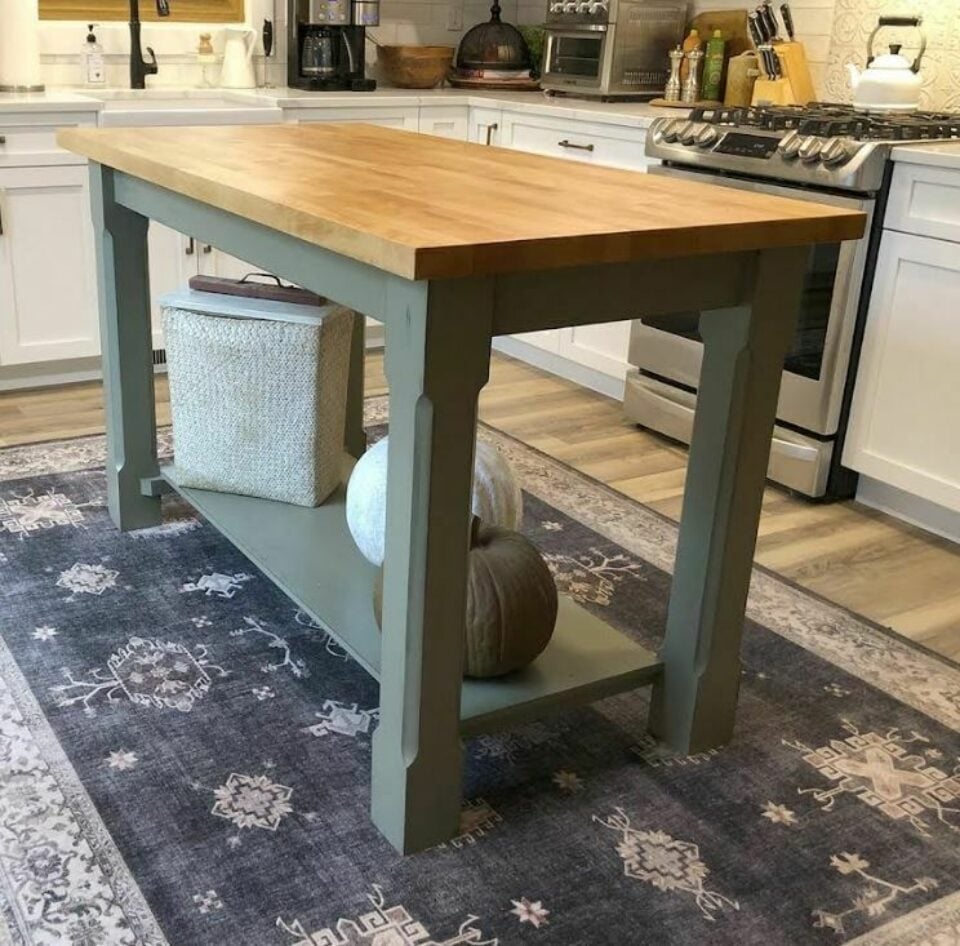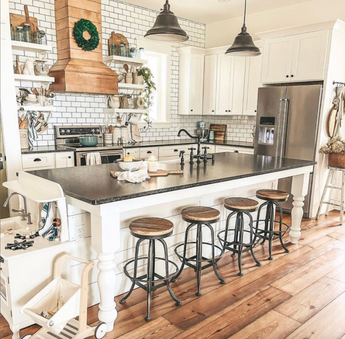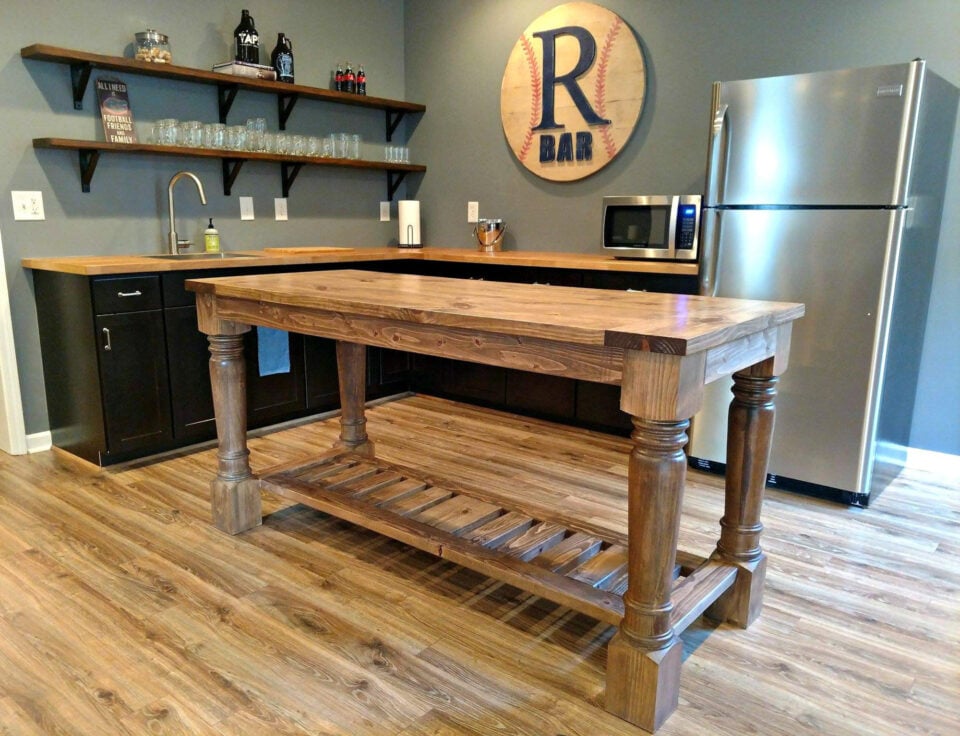How to Mount a Kitchen Island Leg for Maximum Security and Style
How to Mount a Kitchen Island Leg for Maximum Security and Style
Blog Article
Leading Factors To Consider When Selecting a Kitchen Island Leg for Modern Kitchen Interiors
In the realm of contemporary cooking area interiors, the selection of a kitchen island leg is essential, influencing both aesthetic appeals and functionality. As these components intertwine, they raise further inquiries concerning exactly how to achieve the perfect balance in between design and functionality, leaving one to contemplate the implications of each choice on the overall kitchen area experience.
Product Selections
When it pertains to selecting a kitchen island leg, product selections play an important role in both visual appeals and functionality. kitchen island leg. One of the most common products consist of wood, steel, and composite choices, each offering prospective drawbacks and unique advantages
Wood is preferred for its heat and timeless allure, providing a timeless appearance that complements various cooking area designs. It is highly versatile, permitting customization in terms of finishes and shades. Timber may need more upkeep to prevent warping or damage from wetness.
Metal, on the other hand, brings a modern and industrial flair to kitchen area islands. Stainless-steel and wrought iron are preferred choices, recognized for their resilience and resistance to put on. They can stand up to the roughness of day-to-day use but might lack the heat connected with timber.
Composite materials, such as engineered timber or artificial blends, use an equilibrium in between cost, longevity, and looks. These alternatives are typically created to resemble the appearance of natural materials while providing resistance to scrapes and spills.
Eventually, the selection of product should align with the overall cooking area style and intended use, making certain that the kitchen island leg is both visually enticing and practical.
Design And Style
The design and style of a kitchen island leg considerably add to the total visual of the area, matching the picked material. When picking the leg style, think about the building design of the kitchen. Sleek, minimalist legs made of stainless steel or acrylic harmonize with modern designs, while ornate, transformed timber legs boost conventional or farmhouse looks.
Furthermore, the coating of the leg can influence the visual impact; a sleek chrome or matte black surface may stimulate contemporary style, while troubled timber speaks to rustic appeal. The leg's form also plays a critical duty-- right, angular types communicate an even more commercial feel, whereas rounded or conical legs introduce a softer, more welcoming look.
Integrating attractive components, such as makings or decorations, can include individuality and character to the kitchen area island, further enhancing its function as a prime focus. Ultimately, the selected leg design should not only align with the general kitchen area design however likewise reflect the home owner's personal taste, guaranteeing that the kitchen area island becomes a harmonious and functional focal point within the modern-day cooking area inside.
Height and Percentages
Attaining the ideal elevation and proportions for a kitchen island leg is essential for both capability and aesthetics. Kitchen area islands commonly range in height from 28 to 36 inches, depending upon their meant usage-- whether as a cooking surface, eating area, or useful reference work area. Standard countertop height is around 36 inches, making it essential that the legs you pick complement this height to offer a smooth, integrated appearance.
Proportions also play an essential function in the visual balance of the cooking area. The size and weight of the leg must agree with the total design of the island - kitchen island leg. A slender leg might be ideal for a minimalistic or modern island, while a more significant leg may be required for rustic or typical layouts. Furthermore, take into consideration the spacing between the legs; sufficient range ensures convenience and convenience of movement around the island.
When selecting the height and proportions of the cooking area island leg, remember the overall design style of your kitchen. This focus to information not just enhances the functionality of the area however also adds to a natural and aesthetically attractive interior decoration.
Security and Assistance
Consistently making certain stability and assistance in kitchen island legs is necessary for both security and performance. A well-constructed kitchen area island need to stand up to everyday use, including weight from appliances, food preparations, and celebrations. The choice of legs ought to focus on durable products and styles that can supply ample support.
When evaluating stability, take into consideration the leg's product-- wood, steel, or light weight aluminum often use remarkable stamina compared to lighter alternatives. Additionally, the layout should include a broad base to disperse weight evenly and minimize the risk of tipping or wobbling. For instance, legs designed with an A-frame or cross-bracing can dramatically improve stability.

Incorporating these considerations will not just boost the total safety of the kitchen area room but also boost the durability and functionality of the kitchen area island, making it a useful focal point in modern-day kitchen insides.
Ending Up Touches
When it pertains to finishing a kitchen island, thoughtful ending up touches can considerably enhance both its aesthetic allure and capability. Choosing the ideal leg design is crucial, however matching it with appropriate details can transform the whole room. Consider adding decorative aspects such as toe kicks or baseboards that match the Find Out More cabinets or floor covering to develop useful link a seamless look.

A cohesive color scheme and product selection will certainly raise the cooking area island, making it a fascinating focal point. By paying attention to these ending up touches, homeowners can develop a kitchen area island that is both practical and beautiful, catering to their lifestyle and design preferences.
Final Thought

In the realm of contemporary kitchen insides, the option of a kitchen area island leg is critical, influencing both looks and capability.The style and design of a kitchen area island leg dramatically add to the overall aesthetic of the room, complementing the chosen product.Attaining the right height and proportions for a kitchen area island leg is important for both capability and aesthetic appeals.Regularly making sure stability and support in kitchen island legs is necessary for both safety and performance.In recap, picking a kitchen island leg for contemporary interiors requires cautious consideration of material choices, layout style, height, percentages, and security.
Report this page